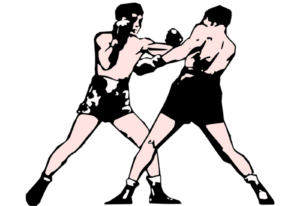Earlier this year, I started a series on U.S. litigation basics for our international audience. The American judicial system is statute-based and complicated, so we’ve previously covered what your pre-litigation options are and where you should sue.
But what if you’re on the receiving end of a lawsuit? Though the plaintiff (the person suing) must satisfy certain case initiation and service requirements on the defendant (the person being sued), there will come a time when the defendant needs to make an appearance in the court case. Here, we’ll break down the various filing options a defendant has for making that appearance and responding to the plaintiff’s complaint. This is an important decision because it sets the overall tenor of the case.
Answering and Introducing Counterclaims
- The Answer: depending on whether you’re in federal or state court (and which state matters too!), the most basic response is the answer. An answer should contain the necessary denials to counter the material allegations of the complaint, as well as any affirmative defenses the defendant wants to assert. Filing an answer puts the case “at issue” and often begins the discovery process.
- The Counterclaims (or, the Cross-Complaint): if you want to assert your own claims for affirmative relief against the plaintiff (or a co-defendant, or even someone not even included in the lawsuit yet), you’ll need to file counterclaims. Generally, the claims need to relate to the subject matter or transaction alleged in the complaint (there are various exceptions though).
Attacking the Complaint
Sometimes though, you may decide the complaint is deficient in some respect. If that’s the case, there are a few vehicles to “attack” the complaint very early in the lawsuit. These are typically costly options, but in the right circumstances, they are highly recommended to simplify the case or even dispose of the case altogether.
- The Motion to Dismiss (or, the Demurrer): this type of motion is used if the complaint or lawsuit is deficient procedurally – like if the court lacks subject matter jurisdiction, or if the plaintiff lacks capacity to sue, or if there is another pending lawsuit between the same parties for the same claims. It also is pleading used to test the “legal sufficiency” of the pleading. The argument to be presented is: “even if all the facts in the complaint are taken to be true, those facts are insufficient to constitute a cause of action.”
- The Motion to Strike: this type of motion is used to literally strike (remove) certain defects in the complaint. This case be to strike the entire complaint or sometimes, even single words or phrases. Defects that can be stricken kind of vary from jurisdiction to jurisdiction – for example, California’s standard is: (a) irrelevant, false or improper matter, or (b) anything not drawn or filed in conformity with the laws of the state.
There are various reasons why early motion practice can be helpful, or maybe even necessary, and worth the early costs. Because it’s a complicated strategic decision, be sure to confer with experienced litigators who can walk you through all of your pre-litigation and litigation options.
























